#livestock diseases
Text
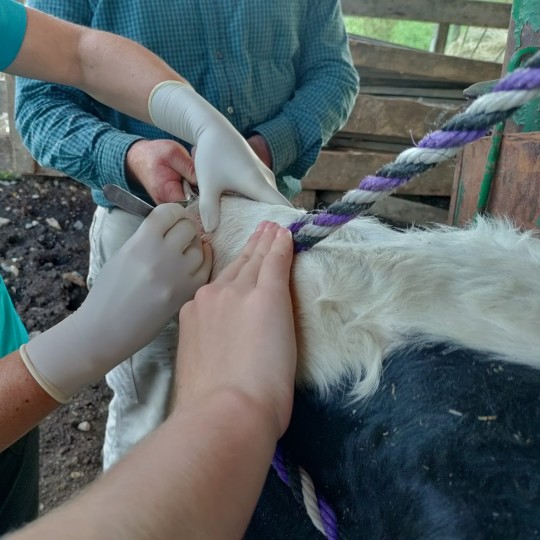
Standing surgery to remove an ulcerated wart from a show heifer.
To do the surgery, we restrained her in a headgate with the farmer holding her head as still as possible with the nose tongs, and I did a local block with lidocaine and gave her a shot of banamine for pain/inflammation. I also covered her eye on the surgery side and pet her to help keep her calm (she was used to being handled and enjoyed petting; for some cattle that would make them even more scared). Then Doc prepped the area as best one can in the field and used an elliptical incision to remove the small mass. She closed with PDS, an absorbable suture, so they won't have to be removed later. She did great!
Cattle warts are a common, usually benign problem that is self-limiting, though recovery can take up to a year. They are caused by several bovine papilloma viruses, which are not transmissible to other species. Surgery is usually reserved for ulcerated warts, as in our girl here, or large warts in unfortunate areas, such as the genitals or udder, that prevent movement or breeding. There is a vaccine available, but it has to be given young, before exposure to infected animals or equipment has occured.
#cattle warts#bovine papilloma virus#cattle#large animal#surgery#field surgery#beef cattle#pain management#local anesthesia#animal handling#animal restraint#livestock#livestock diseases#preventative medicine#vaccines#vaccination
20 notes
·
View notes
Text
Northam & Moora Veterinarians
A Country Practice has been in operation since 2004, led by the husband and wife veterinarian team of Dr Peter Morrell and Dr Virginia Pullman, who both have over 40 years experience in the field. Dr Morrell is one of the two co-founders of A Country Practice and has a special interest in large animal veterinary care. The second co-founder is Dr Virginia Pullman who has a special interest and a Master’s degree in small animal medicine and surgery. Combining the knowledge of both founders with registered and in-training veterinary nurses with several years experience, as well as utilising state-of-the-art equipment, A Country Practice is able to implement effective animal treatment with compassion and care.
#vet#pet#veterinary#veterinarian#pet services#large animal services#veterinary surgery#veterinary medicine#medical services#vet consultations#pet vaccinations#grooming and dental care#grooming#dental care#pet care#pet care and accessories#livestock diseases#sheep parasites
2 notes
·
View notes
Text
Chronic wasting disease was confirmed in ungulates in my region. It's so fucking over for us. Chronic wasting disease is highly contagious, incurable, and can't be killed or treated because it's a prion disease. Not a living thing, a folded protein. Can't be destroyed once it's in the body. It spreads via all parts of an animal, not just the brain. It's in mucus and saliva. Meat and blood. It remains infectious in soil and dead plant matter for years.
It can and it will infect humans. There is no reason to think it can't and won't. Such optimism is a lie or a delusion to prevent panic. This is far worse than mad cow. Far more infectious, impossible to contain, faster-acting.
We are fucked.
#chronic wasting disease#prion diseases#mad cow#we are so fucked#the next pandemic#prion diseases are a slow burn but this one is BAD#the anthropocene era#we're in a so highly pandemic-friendly environment right now#this was caused by deer farming but due to the way deer work it spread rapidly to the environment#good fucking luck keeping deer out of anywhere#if you have livestock they ARE interacting with deer
7 notes
·
View notes
Text
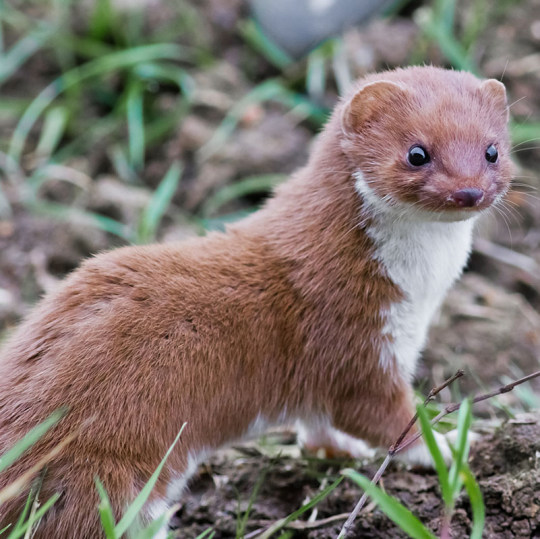
The weasel in Scandinavian folklore
Weasels were not to be killed or harmed. If you hurt a weasel in any way, your farm would lose all of its luck and fortune. And, according to some people, hundreds of the dead weasel's friends would appear and blow "vessleblåst" on you (or your cattle) . Vessleblåst was a disease that caused pain and swelling.
The bite of the weasel was thought to be lethal. Some even believed that the weasel had venomous saliva.
Weasels could also crawl into the ears of your livestock, causing all kinds of [health] issues.
Given its dangerousness, people avoided mentioning the weasel by its proper name. Instead, they used noa names such as "den lilla sköna" ('the little beauty'), "jungfrun" ('the maiden', 'the virgin').
Most people didn't make any distinction between the stoat and the common weasel; both are referred to as "vessla."
Sources:
Eva Wigström, Djurlifvet i folkets tro och sägner
Ebbe Schön, Folktrons ABC
#weasels#vessleblåst#animals#scandinavian folklore#folklore#protected animals#disease#noa names#livestock#lekatt#vessla
86 notes
·
View notes
Text
i genuinely do not understand how people can believe in the bible and still think god is good
#like aside from allowing suffering and violence and disease for no reason.#job was too good at being a christian so god murdered his livestock and his children and his innocent servants and slaves because he could?#this theology class is going to kill me. god is literally the villain of every story#''god destroyed job's life and murdered hundreds for fun. but job was good because he didn't complain!''#like that is not religious teaching. that is not helpful to anyone not in power. that is propaganda that is still present after 3000 years.#anyway 🦛#p
4 notes
·
View notes
Text
Cultivating Self-Reliance: My Experience with "The Self-Sufficient Backyard Book"
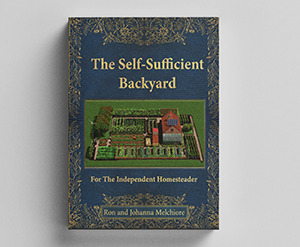
In today's world of increasing uncertainty, the concept of self-sufficiency has become increasingly appealing. The idea of growing your own food, harnessing renewable resources, and reducing dependence on external systems resonates deeply. That's why I was excited to delve into "The Self-Sufficient Backyard Book" by Dhamarramma.
A Comprehensive Guide for Aspiring Backyard Homesteaders
This book isn't simply a collection of recipes for growing vegetables. It's a comprehensive guide that empowers readers to transform their backyards into productive, self-sustaining havens. From the very first chapter, Dhamarramma establishes a clear vision – one where individuals can cultivate a more sustainable and resilient lifestyle.
The book is well-organized, with sections dedicated to various aspects of backyard self-sufficiency. Each section dives deep into a specific topic, providing practical advice, step-by-step instructions, and helpful illustrations. Whether you're a complete novice or have some experience with gardening, "The Self-Sufficient Backyard Book" offers valuable insights and guidance.

Planning and Design: Laying the Foundation for Success
The book emphasizes the importance of thorough planning before diving headfirst into backyard projects. It guides readers through the process of assessing their available space, identifying sunlight patterns, and choosing suitable crops based on local climate conditions. This initial planning stage is crucial for maximizing the potential of your backyard oasis.
Dhamarramma also delves into garden design principles, offering suggestions for creating efficient and aesthetically pleasing layouts. The book explores various techniques like companion planting and raised bed gardening, maximizing space and fostering a healthy ecosystem within your backyard.
Cultivating Your Own Food: From Seed to Harvest
A significant portion of the book focuses on the art of growing your own food. It covers a wide range of vegetables, fruits, and herbs, providing detailed instructions on seed selection, planting techniques, and proper care throughout the growing season. The book also addresses common challenges like pest control and disease management, equipping readers with the knowledge to nurture their crops from seed to harvest.
What truly impressed me was the book's emphasis on sustainable gardening practices. Dhamarramma promotes techniques like composting and water conservation, encouraging a responsible and eco-friendly approach to backyard food production.
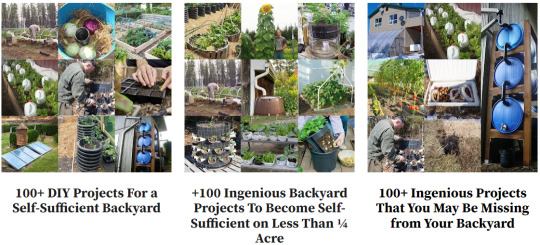
Beyond the Vegetable Patch: Exploring Other Avenues of Self-Sufficiency
"The Self-Sufficient Backyard Book" goes beyond just food production. It explores other avenues of self-reliance, such as rainwater harvesting, raising small livestock like chickens or bees, and even generating renewable energy through solar panels. These additional chapters broaden the scope of the book, empowering readers to explore various sustainable practices that can further enhance their self-sufficiency journey.
The book is not just a collection of instructions; it's also a source of inspiration. Dhamarramma shares personal anecdotes and success stories from other backyard homesteaders, showcasing the potential rewards and the positive impact of creating a more self-sufficient lifestyle.
A Practical Companion for Aspiring Backyard Homesteaders
"The Self-Sufficient Backyard Book" is a valuable resource for anyone interested in exploring self-sufficiency and creating a more sustainable lifestyle. It's a well-written, informative guide that caters to both beginners and those with some experience. Whether you're looking to grow your first tomato plant or embark on a more comprehensive self-sufficiency journey, this book provides the knowledge, inspiration, and practical steps to make it happen.
The book's clear structure, engaging writing style, and helpful visuals make it a joy to read and a constant companion for reference. With its comprehensive approach and emphasis on sustainability, "The Self-Sufficient Backyard Book" is an excellent investment for anyone wishing to cultivate a more resilient and rewarding backyard haven.
Click to Visit the Official Website.....
#Self-sufficiency#Sustainable living#Backyard homesteading#Food security#Reduced reliance on external systems#Environmentally friendly gardening practices#Step-by-step instructions#Practical advice#Gardening techniques#Sustainable practices#Rainwater harvesting#Raising small livestock#Renewable energy#Backyard oasis#Resilient lifestyle#Seed selection#Pest control#Disease management#Composting#Water conservation#Inspiring stories#Backyard Homesteading#Self-Sufficiency#Sustainable Living#Grow Your Own Food#Reduce Dependence on External Systems#Food Security#Resilience#Eco-Friendly Gardening#Renewable Resources
0 notes
Text
i just remembered that rinderpest used to exist ugh im obsessed with disease eradication programs
#i went to plum island once!! it's a government lab where they research highly infectious livestock diseases#and they helped eradicate rinderpest which was like really awful#the only other disease we've eradicated is smallpox but there are other eradication programs in place#rn they're trying to eradicate guinea worms yaws malaria and ummm measles i think?#plum island is researching african pig fever and fmd though bcs they don't do zoonotic diseases
1 note
·
View note
Text
Unveiling the Threat: Understanding the Latest Developments in Bluetongue Disease Research and Control Strategies
Introduction:
Bluetongue disease, a viral illness primarily affecting ruminant animals, has garnered increasing attention in recent years due to its global spread and impact on livestock health and agricultural economies. Characterized by fever, lameness, and characteristic blue tongue discoloration, this vector-borne disease poses significant challenges to livestock producers and veterinary…

View On WordPress
#1. Bluetongue disease#10. Epidemiology#11. Climate change impact#12. Disease control#13. Veterinary research#14. Animal welfare#15. Public health.#2. Livestock health#3. Veterinary medicine#4. Vector-borne diseases#5. Animal diseases#6. Disease surveillance#7. Vaccine development#8. Agricultural economics#9. Global health
0 notes
Text
Indonesian Muslims celebrate Eid al-Adha amid FMD outbreak
Indonesian Muslims celebrate Eid al-Adha amid FMD outbreak
JAKARTA, Indonesia — A foot-and-mouth disease outbreak has disrupted ritual slaughter of animals to mark Eid al-Adha as millions of Muslims across Indonesia were celebrating one of the biggest holidays in the Islamic calendar Sunday.
Eid al-Adha, known as the “Feast of Sacrifice,” is a revered observance that coincides with the final rites of the annual hajj in Saudi Arabia. It’s a joyous…
View On WordPress
#animal health#Coronavirus#Disease outbreaks#Diseases and conditions#Epidemics#Foot-and-mouth disease#General news#Health#Humanitarian crises#Infectious#Islam#Livestock diseases#Lung disease#Pandemics#Public health#Religion#Social affairs
0 notes
Text
Anti-Coccidial Drugs Market : Unlocking Opportunities with Gorwth Insights and Advancements
Anticoccidial Drugs Market Insights
In April 2019, Creative Diagnostics developed anticoccidial drug assay products to test anticoccidial drug residues in animals. This advancement and awareness of anticoccidial drugs will impact the trend of the anticoccidial drugs market. Growing awareness of animal health and zootonic diseases is expected to increase acceptance of anticoccidial drugs. The rising carnivorous population and reliance on bovine products is expected to be a driving factor for the growth of the anticoccidial drugs market. Additionally, the increase in research and development of veterinary drugs is expected to provide growth opportunities for anticoccidial drugs.
Click here for full report:
The growth of the global anticoccidial drugs market is expected to be driven by increasing outbreaks of coccidia combined with growing reliance on poultry products. Additionally, stringent government regulations aimed at maintaining livestock health in developed countries are expected to increase the adoption of anticoccidial drugs. Growing expenditure and pet owners' awareness of animal health is expected to be a driving force for the anticoccidial drugs market.
Conversely, certain government policies restricting the use of anticoccidial antimicrobial drugs in livestock are expected to inhibit the growth of the anticoccidial drugs market. Additionally, the growing demand for antibiotic-free meat has likely impacted the growing trend of the anticoccidial drugs market.
Anticoccidial Drugs Market Segment Analysis
By Drug Type
Ionophore Anticoccidials
Chemical Derivative Anticoccidials
Click here fore free sample request:
By Animal Type
Poultry
Swine
Cattle
Others
Competitive Key Players
Bayer Animal Healthcare
Boehringer Ingelheim
Ceva Animal Health Inc.
Elanco Animal Health (a subsidiary of Eli Lilly)
Merck
Merial
Virbac
Zoetis Animal Healthcare
Vetoquinol SA
Click here for full report:
Anticoccidial Drugs Market Geographical Analysis
The global anticoccidial drugs market has been segmented into North America, Europe, Asia-Pacific, Latin America, Middle East & Africa. Developed countries in North America and Europe are estimated to dominate the global anticoccidiosis drug market due to established veterinary care and active government involvement in farm animal health and management. Asia-Pacific and Latin America countries are expected to register higher CAGR in the global anticoccal drugs market growth due to growing dependence on farm animals and an increasing number of pet owners of the company. In the Middle East and Africa, the unmet need for animal health is expected to be a driver of the anticoccal drugs market in the region.
Anticoccidial Drugs Market Key Developments
In 2014, Zoetis announced the reintroduction of Zoamix, a synthetic anticoccidial drug indicated for poultry.
In February 2015, Zoetis announced the completion of its acquisition of Abbott's animal health business.
In May 2016, Laboratorios Hipra received European Union approval for the company's coccidiosis vaccine Evalon
#Anti-Coccidial Drugs#Market Research#Industry Advancement#Coccidiosis Treatment#Pharmaceutical Innovations#Disease Prevention#Poultry Health#Livestock Farming#Drug Development#Market Trends
0 notes
Text
Controversy Surrounding Biden Administration's Decision to Import Beef from Paraguay
https://headlinehorizon.com/Politics/Executive/1269
The Biden administration's decision to open the US borders to imports of beef from Paraguay has drawn intense criticism due to concerns over the potential introduction of a livestock disease. Industry groups and concerned citizens are calling for a reassessment of the risk factors associated with this move.
0 notes
Text
Animal Health Sector: Trends, Challenges, and Opportunities in 2023 and Beyond
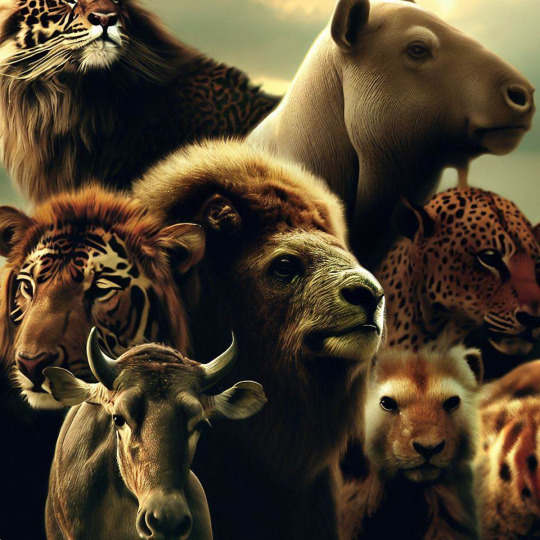
View On WordPress
#animal health#digital health#disease prevention#global trends#innovation#livestock#London#One Health#pet care#regulatory environment#UK#veterinary medicine
0 notes
Text
Causes of Carcass Condemnation and its Associated Financial Losses in Slaughtered Pigs at the Kumasi Abattoir Company Limited
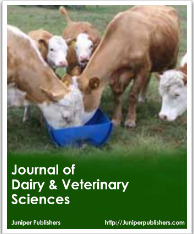
Abstract
The study was conducted from August 2017 to December 2017 at the Kumasi Abattoir Company Limited to investigate the causes of carcass condemnation in slaughtered pigs and their associated financial losses. Out of the 1221 pigs examined, 212(17.4%) were affected with pathological conditions. The five most frequent pathological conditions were: Lung congestion (7.9%), Ascariasis (2.7%), Cysticercosis (2.4%), Liver congestion (1.1%) and Liver abscess (0. 9%). Pathological conditions were more prevalent (57%) in female pigs than in males (43%). Cross bred pigs were more (81%) affected by pathological conditions than the local Ashanti black pig (19%). The overall carcass condemnation rate was 1.7% with Cysticercosis being the major cause. The average condemnation rate of visceral organs was 1.8 %. Annually, a total of One hundred thousand, six hundred and twenty-eight cedis, seventy-two Pesewas (GHc100, 628.72) was lost due to condemnation of carcasses and organs at the Kumasi Abattoir. Butchers, pig owners and other stakeholders should be educated on pre-slaughter management and handling of animals
Keywords: Pigs; Cysticercosis; Lung congestion; Ascarioisis
Abbrevations: MOFA: Ministry of Food and Agriculture; GHc: Ghana cedis; GDP: Gross Domestic Product
Introduction
Agriculture employs about 60% of the working population and contributes to 21.5% of Ghana’s Gross Domestic Product (GDP) [1]. The livestock population in Ghana is estimated to be 682,000 pigs, 1,657,000 cattle, 4,335,000 sheep and 6,044,000 goats [2]. Swine production is an important economic activity in Ghana due to the high prolificacy and high feed conversion rates of pigs. Pigs are reared under intensive conditions on many farms in the Greater Accra, Ashanti, Brong Ahafo and Volta regions of Ghana [3]. Unfortunately, there is poor documentation on swine diseases in the country. The availability of this information will be invaluable for designing disease control mechanisms. The abattoir has been recognized as a reliable source of information on livestock diseases. This study therefore seeks to investigate the causes of carcass condemnation in pigs slaughtered at the Kumasi abattoir and assess the associated financial losses.
Materials and Methods
The study was conducted from August to December 2017 at the hog unit of the Kumasi Abattoir Company Limited (KACL). The study population were pigs brought for daily slaughter at the hog line during the peak hours of 6 am and 10 am. The abattoir was visited thrice in a week during the study period. Ante mortem inspection was conducted on pigs at the lairage. The pigs passed for slaughter were led to the hog line for stunning and slaughtering. Postmortem inspection was conducted on them by trained veterinary personnel [4]. After inspection, the number of carcasses passed for human consumption and number of partial or totally condemned carcasses were recorded. The reason/s for carcass condemnation was noted for each case and the financial losses associated with carcass condemnations were estimated as described by [5] and modified as follows: Annual Financial loss due to total carcass condemnation = average slaughter rate* condemnation rate of carcass* prevailing market price of average carcass.
Annual Financial loss due to viscera’s condemnation = average slaughter rate *condemnation rate of viscera * prevailing market price of viscera. The total financial losses due to condemnation was obtained from the sum of the losses due to whole carcass and viscera condemnation respectively. Data obtained were analyzed using descriptive statistics
Results and Discussion
The proportion and causes of carcass condemnation are presented in Table 1. Out of the 1221 pigs examined, 21 (1.72%) carcasses were totally condemned, while 191(15.64%) were partially condemned. Partial condemnation included the rejection of diseased offal’s as well as trimmings on the carcass itself. In this study, total condemnation of carcasses was due solely to generalized cysticercosis. The low rate of total carcass condemnation was similar to reports by [6] at a commercial slaughterhouse in Brazil. The prevalence of porcine cysticercosis at this abattoir had previously been reported by [7]. Cysticercosis is an emerging agricultural and public health problem in Africa [8,9]. The risk factors for cysticercosis in developing countries have been identified as general poverty, free ranging of pigs, poor sanitary conditions and home slaughter of pigs without inspection [9,10].
The rate of partial carcass condemnation of 15.64% in this study was lower than (25.44%) recorded at the Addis Ababa Municipal Abattoir [10]. This could be due to difference in location, environmental conditions and slaughtering methods used. The top five causes of partial carcass condemnation in descending order were as follows: lung congestion (7.94%), Ascariosis (2.70%), liver congestion (1.06%), liver abscess (0.90%) and localized cysticercosis (0.65%). These findings are similar to reports by [11] that the major causes of partial carcass condemnation in pigs slaughtered at a municipal abattoir in Addis Ababa, Ethiopia, were hydatidosis, cysticercosis, fasciolosis, liver cirrhosis, pneumonia and abscesses. On the other hand, these findings contradict a report in Northern Portugal by [12]. They concluded that Osteomyelitis (38.5%), Granulomatous lymphadenitis (22.7%), pleurisy/ pneumonia (21.2%), abscesses (8.4 %) and peritonitis (2.6%) were the main causes of carcass and organ condemnation
The financial losses associated with carcass condemnation were calculated as: described by [5] For this study, partial carcass condemnation included carcass trimming and rejected offal’s. At this abattoir, the offal’s were considered as a lot and as priced as such. The annual slaughter of pigs as taken from the abattoir records was 9805. Annually, a total of One hundred and six thousand, five hundred and fifty-four cedis, eighty-six pesewas (GHc 106,554.86) was lost due to carcass condemnation at this abattoir (Table 2). At an exchange rate of GHc4.90= 1 US dollar, this was equivalent to 21, 745.89 United States dollars
Conclusion and Recommendations
Porcine cysticercosis was the main cause of total carcass condemnation. The annual financial loss associated with carcass condemnation amounted to One hundred and six thousand, five hundred and fifty-four cedis, eighty-six pesewas (GHc 106,554.86) or 21, 745.89 United States Dollars. It is recommended that Farmers should be educated on intensive pig rearing. The butchers, pre-slaughter animal handlers should be educated on pre-slaughter management and handling of animals.
To Know More About Journal of Dairy & Veterinary sciences
Please click on: https://juniperpublishers.com/jdvs/index.php
For more Open Access Journals in Juniper Publishers
please click on: https://juniperpublishers.com/index.php
#Milk Born Diseases#metabolic studies#livestock management#laboratory animal medicine#Juniper Publishers#open access journals
0 notes
Text
I looked up some stuff about the "domestication syndrome" in animals because I read a couple times in books the idea that domesticated animals are neotenous, meaning they retain juvenile traits into adulthood. The idea being that humans have essentially created more helpless, more exploitable versions of wild animals to "dominate" and abuse nature.
I thought, "Okay, that sounds like something that couldn't be proven. How much do we even know about the juvenile brain development of, say, wild goats or boars, anyway?"
So I found this review of the literature that goes back to the fur farm fox domestication study and it's even worse than I thought: We don't even know that a 'domestication syndrome' in animals exists at all, let alone whether it is a retention of juvenile traits into adulthood.
So the fur farm fox domestication study: you may have heard of it, it claimed to have demonstrated that within a few generations, by selecting for tameness, the researchers bred "domesticated" foxes with a whole suite of traits that appear in many domesticated animals but seem unrelated to tameness, such as piebald coloration and floppy ears. The idea is that the genes for tameness and for these other traits commonly seen in domestic animals are linked, that is, an animal that inherits one is likely to inherit the other.
There's some major problems. First of all, all the foxes used in the study were from fur farms, and had already been selected for some level of docility and for coat color variation. The foxes didn't get white spots on them because they were selected for tameness, instead the pre-existing population they were selected from had those genes in it to begin with. Also, the effective population size of the foxes in the study was pretty small, meaning a small amount of genetic drift could have a big impact.
Second, there isn't very much evidence for most of the "domestication syndrome" traits in most animals. Even where the "domestication syndrome" traits can be found, they are often particular to specific breeds, and it's unclear whether they are linked to domestication as such or just the development of that specific breed.
This study only deals with a few animals, mostly small animals. It would be even more interesting to see a breakdown of even more animals (particularly more large animals). Off the top of my head, almost none of these would apply to horses, and only in specific cases would apply to cattle. Even in dogs, extreme changes in skull morphology have happened relatively recently with breeders in modern times going after extreme phenotypes.
Particular to cats: extreme skull changes and floppy ears occur as part of some "breeds" because they are specific painful genetic disorders that breeders of cats decided to perpetuate VERY recently. Scottish Folds were deliberately developed from cats that just so happened to have a disease that causes them to be in constant suffering due to their messed up joints, it's not just a variation that regularly pops up in cats to varying extents. Likewise with the smushed-face Persians. Their brains are getting squished into where their spinal cords should go because their skulls are so messed up from selective breeding for an extreme look.
What domestication means has been majorly shaken up in the past hundred years. With companion animals, breeders are in a race to make the most screwed up animal with the most extreme, striking traits possible, and with livestock animals, lots of heritage breeds with more variations have straight up gone extinct because they've been flattened into industrial monocultures to produce meat and milk as efficiently as possible, health and genetic diversity be damned.
To study domestication itself, you would have to study landrace breeds, right?
Basically there isn't one thing that domestication is
3K notes
·
View notes
Text
outdoor cats should be illegal. I don't care that it's gonna make it impossible for some people to have cats, I don't care that it would make more cats have to be put down because they can't be kept indoors. No, barn cats aren't a valid excuse. Barn cats are useless, get a damn ratting dog it won't give your livestock diseases or shit in their feed like barn cats do. I don't give a shit that your cat tears the house up if you keep it inside, maybe you should actually care for your cat and not expect all it's enrichment to come from being tossed outdoors. Stop making up excuses for neglecting cats.
3K notes
·
View notes
Text
1 note
·
View note